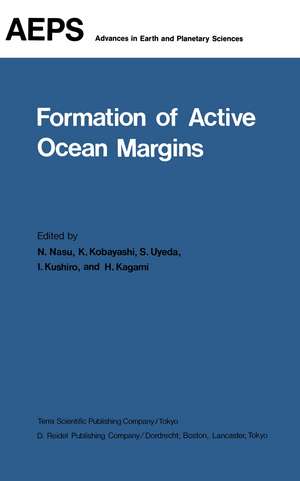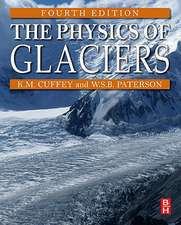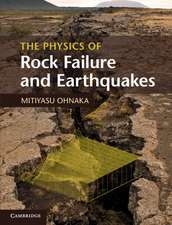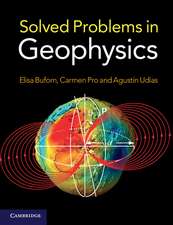Formation of Active Ocean Margins: Advances in Earth and Planetary Sciences, cartea 20
Editat de Noriyuki Nasu, Seiya Uyeda, Kazuo Kobayashi, Ikuo Kushiro, Hideo Kagamien Limba Engleză Paperback – 8 oct 2011
Din seria Advances in Earth and Planetary Sciences
- 15%
 Preț: 647.40 lei
Preț: 647.40 lei - 15%
 Preț: 643.48 lei
Preț: 643.48 lei -
 Preț: 362.90 lei
Preț: 362.90 lei - 18%
 Preț: 1248.51 lei
Preț: 1248.51 lei -
 Preț: 396.24 lei
Preț: 396.24 lei - 18%
 Preț: 949.55 lei
Preț: 949.55 lei -
 Preț: 392.60 lei
Preț: 392.60 lei -
 Preț: 396.78 lei
Preț: 396.78 lei -
 Preț: 404.51 lei
Preț: 404.51 lei -
 Preț: 399.79 lei
Preț: 399.79 lei -
 Preț: 393.90 lei
Preț: 393.90 lei - 18%
 Preț: 1228.77 lei
Preț: 1228.77 lei -
 Preț: 388.72 lei
Preț: 388.72 lei -
 Preț: 390.84 lei
Preț: 390.84 lei -
 Preț: 382.36 lei
Preț: 382.36 lei - 18%
 Preț: 973.86 lei
Preț: 973.86 lei - 18%
 Preț: 1223.74 lei
Preț: 1223.74 lei - 18%
 Preț: 950.21 lei
Preț: 950.21 lei - 18%
 Preț: 947.35 lei
Preț: 947.35 lei
Preț: 425.84 lei
Nou
Puncte Express: 639
Preț estimativ în valută:
81.51€ • 88.57$ • 68.51£
81.51€ • 88.57$ • 68.51£
Carte tipărită la comandă
Livrare economică 22 aprilie-06 mai
Preluare comenzi: 021 569.72.76
Specificații
ISBN-13: 9789401085991
ISBN-10: 9401085994
Pagini: 952
Ilustrații: 930 p.
Dimensiuni: 155 x 235 x 50 mm
Greutate: 1.31 kg
Ediția:Softcover reprint of the original 1st ed. 1986
Editura: SPRINGER NETHERLANDS
Colecția Springer
Seria Advances in Earth and Planetary Sciences
Locul publicării:Dordrecht, Netherlands
ISBN-10: 9401085994
Pagini: 952
Ilustrații: 930 p.
Dimensiuni: 155 x 235 x 50 mm
Greutate: 1.31 kg
Ediția:Softcover reprint of the original 1st ed. 1986
Editura: SPRINGER NETHERLANDS
Colecția Springer
Seria Advances in Earth and Planetary Sciences
Locul publicării:Dordrecht, Netherlands
Public țintă
ResearchCuprins
1: Subduction Tectonics.- Pangea, Geoid and the Evolution of the Western Margin of the Pacific Ocean.- Thickness Anomalies of the Lithosphere, Driving Force of Subduction and Accretion Tectonics.- Bending of the Viscoelastic Lithosphere and the Outer Topographic Rise.- Neogene Tectonic Evolution and Plate Subduction in the Japanese Island Arcs.- Two Types of Active Margins: Convergent-Compressional Margins and Convergent-Extensional Margins.- The Age and Mode of Kinematics of the Formation of Forearc Basins and Trench, Japan Trench Region.- 2: Forearc Tectonics.- Kinematics and Mechanics of Deformation Across Some Accreting Forearcs.- Some Implications Regarding Tectonic Mechanisms from the Structural Diversity Along Several Modern Convergent Margins.- Internal Structures of the Accretionary Wedge in the Nankai Trough Off Shikoku, Southwestern Japan.- Sediment Accretion and Subduction in the Middle America Trench.- The Origin of Some Common Types of Melange in the Western Cordillera of North America.- Fore-Arc Tectonics in the Northern Mariana Arc.- Seamarc II Studies of Subducting Seamounts.- Dredged Samples from the Ogasawara Fore-Arc Seamount or “Ogasawara Paleoland”—“Fore-Arc Ophiolite”.- Accretion in the Nankai Trough.- 3: Arc Magmatism.- Arc Magmatism—An Unresolved Problem of Sources, Material Fluxes, Tectonic Evolution and Thermochemical Regions of Subduction Zones.- Geochemical Characteristics of Back-Arc Basin Basalt.- A Miocene Forearc Magmatism at Shionomisaki, Southwest Japan.- Volcanogenic Sediments of the Japan Trench Area and Tertiary Explosive Volcanism of the Tohoku Arc.- On the Episodic Vicissitude of Tectonic Stress Field of the Cenozoic Northeast Honshu Arc, Japan.- 4: Back-Arc Tectonics.- Age of Subducting Lithosphere and Back-Arc BasinFormation in the Western Pacific Since the Middle Tertiary.- Sofugan Tectonic Line, A New Tectonic Boundary Separating Northern and Southern Parts of the Ogasawara (Bonin) Arc, Northwest Pacific.- Regional Geology of the Beringian Continental Margin.- Sedimentation Patterns in Relation to Rifting, Arc Volcanism and Tectonic Uplift in Back-Arc Basin of the Western Pacific Ocean.- When Was the Japan Sea Opened?: Paleomagnetic Evidence from Southwest Japan.- Formation of the Okinawa Trough.- 5: Accretion Tectonics (I).- Tectonic Instability on a “Stable” Shelf behind a Passive Margin—A Structural History of the English Channel.- The Fate of Seamounts and Oceanic Plateaus Encountering a Deep-Sea Trench and Their Effects on the Continental Margins.- 6: Accretion Tectonics (II).- Tectonic Framework of the Kuril Arc Since Its Initiation.- Early Cretaceous Dual Subduction System In and Around the Kamuikotan Tectonic Belt, Hokkaido, Japan.- Influence of Izu Subduction-Collision on the Deformation of Central Japan.- Ophiolite-Based Forearcs: A Particular Type of Plate Boundary.- Broken Seamount Fragments in the Setogawa Subduction Complex.- Paleomagnetic Evidence of the Northward Drift of the Izu Peninsula, Central Japan.- 7: Accretion Tectonics (III).- Some Tectonic and Tectogenetic Aspects of SW Japan: An Alpine-Type Orogen in an Island-Arc Position.- Stratigraphic Change of the Coarse Clastic Rocks of the Shimanto Supergroup in Eastern, Shikoku, Southwest Japan.- Sedimentary Evolution of Shikoku Subduction Zone: The Shimanto Belt and Nankai Trough.- Collision of the Amami Plateau with the Ryukyu Island Arc.- Coral Reefs and Present-Day Collision-Subduction Tectonics.- 8: Pelagic Sediments.- Chemical Compositions of Pelagic Deep-Sea Sediments—Its Relation to theFormation of Authigenic Mineral Phase under the Chemical Control of Sea Water.- Manganese Content, Cerium Anomaly, and Rate of Sedimentation as Aids in the Characterization and Classification of Deep-Sea Sediments.













